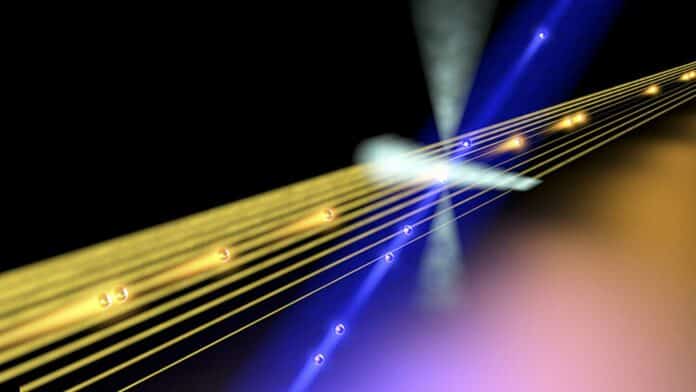A team of researchers from Leibniz University Hannover (Germany) and the University of Strathclyde in Glasgow (United Kingdom) has challenged a previously held assumption about the impact of multiphoton components in interference effects involving thermal fields (such as sunlight) and parametric single photons generated in non-linear crystals.
Through experiments, they demonstrated that the interference effect between thermal light and parametric single photons also results in quantum interference with the background field. This finding indicates that the background cannot be easily ignored and subtracted from calculations, as was commonly done until now.
The research was led by PhD student Anahita Khodadad Kashi, who focuses on photonic quantum information processing at the Institute of Photonics. Her work delved into understanding how the visibility of the Hong-Ou-Mandel effect, a quantum interference phenomenon, is influenced by multiphoton contamination.
Khodadad Kashi said, “With our experiment, we have disproved the previously valid assumption that multiphoton components would only impair visibility and can therefore be subtracted in the calculation. We have discovered a new fundamental characteristic that was not considered in previous calculations. Our newly developed model can predict the quantum interference and we can measure this effect in an experiment.”
The researchers stumbled upon their discovery during an experiment in the laser laboratory. They encountered a result that contradicted the original calculation method, which would have been physically impossible. The team collaboratively engaged in troubleshooting both the experimental setup and the calculation model to resolve the discrepancy.
The researchers collaboratively developed a new theory regarding the quantum interference of thermal fields with parametric single photons. Quantum researcher Lucia Caspani from the University of Strathclyde in Glasgow was the first to test this approach.
Subsequently, Khodadad Kashi presented the theory and experimental results at international conferences, including Photonics West in San Francisco. The team’s contribution enhances understanding of quantum phenomena, particularly in the context of quantum key distribution for secure communications.
Journal Reference:
- Anahita Khodadad Kashi, Lucia Caspani, and Michael Kues. Spectral Hong-Ou-Mandel Effect between a Heralded Single-Photon State and a Thermal Field: Multiphoton Contamination and the Nonclassicality Threshold. Physical Review Letters. DOI: 10.1103/PhysRevLett.131.233601
